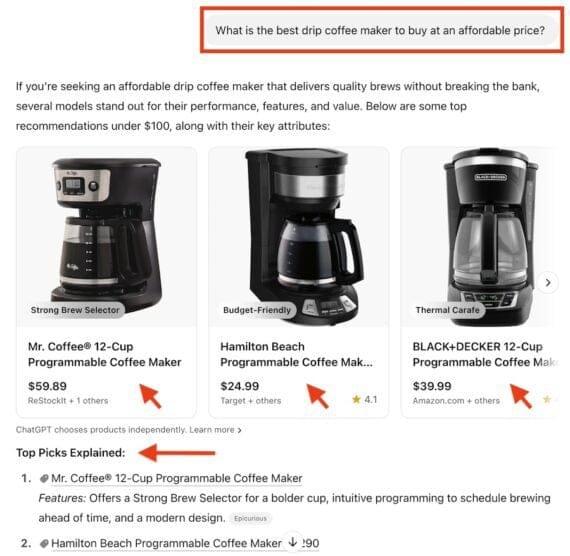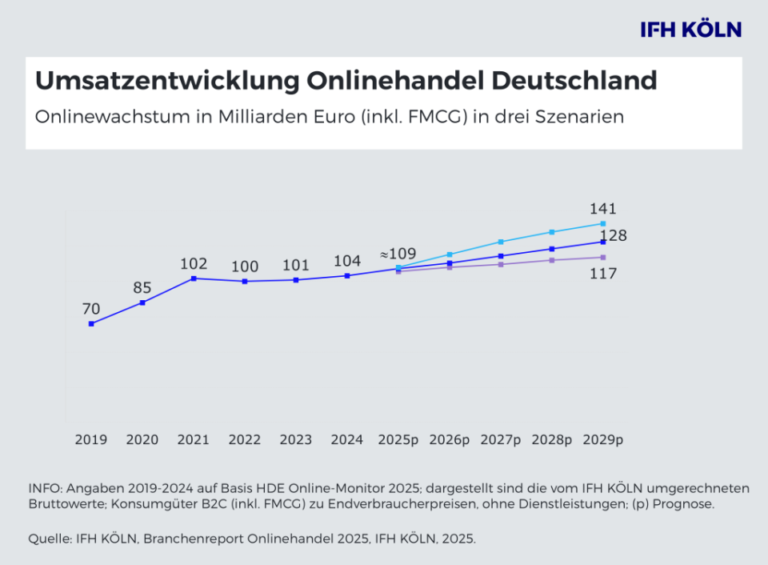
Ad spending growth trends were mixed across the largest U.S. digital ad platforms in Q3, while pricing growth was weak, according to a report released today by an independent performance marketing firm.
While all but Facebook saw stronger volume growth in the quarter, only Instagram, with a 21% year-over-year increase, and YouTube, with a 12% jump, were able to deliver greater spending growth than they did in Q2, Tinuiti reported in its Q3 2025 Digital Ads Benchmark Report, which is based on performance data from advertising programs under the company’s management, which have a total annual ad spend of more than US$4 billion.
The 27-page report noted that some advertisers have been forced to adjust budgets as a result of higher U.S. tariffs. However, overall ad spend has not been clearly impacted by tariffs specifically so far.
The report also noted that many Google advertisers benefited from Amazon’s withdrawal from U.S. Google shopping auctions in late July. That move likely contributed to strengthening click growth and weakening cost-per-click growth trends as the e-commerce giant left a large vacuum for its competitors to fill.
“Amazon’s pause on Google Shopping ads has temporarily leveled the playing field for other retailers, giving them access to lower CPCs [cost-per-click] and more inventory visibility,” explained Mark N. Vena, president and principal analyst with SmartTech Research, a technology advisory firm in Las Vegas.
“For marketers, this represents an opportunity to capture incremental traffic that was previously overshadowed by Amazon’s dominance,” he told the E-Commerce Times. “However, most view this as a short-term reprieve — once Amazon resumes activity, competition and costs are likely to climb again.”
Amazon Shifts Ad Strategy
Table of Contents
Baruch Labunski, CEO of Rank Secure, a website development and search engine optimization firm in Toronto, agreed that Amazon’s decision to stop running Google Shopping Ads presented competitors with a unique opportunity. “Google was able to focus newly available attention on smaller e-commerce brands,” he told TechNewsWorld. “For those brands, the opportunity to gain visibility at lower cost was a rare treat.”
“A lower CPC with higher traffic suggests advertisers have the ability to unlock more spend, increase investments, and compete for the traffic — and compete, especially, against Amazon,” he said.
Katherine Cartwright, co-founder of Criterion Global, an international media buying agency headquartered in New York City, asserted that Amazon’s withdrawal from Google shopping auctions signals a new attitude by the online retailer.
“Amazon’s new tone in the market is that it isn’t here to make friends,” she told the E-Commerce Times. “Google has enjoyed Amazon’s ad dollars for over a decade. Amazon no longer needs Google’s traffic, plain and simple.”
Amazon’s exit from Google’s shopping auctions didn’t hurt the volume growth for Amazon’s primary Ad Console format, Sponsored Products, Tinuiti reported. “In fact,” it noted, “the format saw click growth spike to 31% year over year, with spend growth decelerating just slightly to 15% on a tougher year-ago comparison.”
“With Amazon out of Google’s listings, users may be conducting more searches on Amazon itself, rather than navigating from Google,” it added.
Amazon Leads Vertical Ad Shift
SmartTech’s Vena argued that the material surge in Sponsored Products clicks reinforces the fact that Amazon remains the starting point for product discovery for millions of consumers. “This trend also suggests that Amazon’s AI-driven Rufus assistant may already be improving internal search relevance and personalization, making ads more effective,” he said.
“For marketers, it signals the growing importance of investing in Amazon’s ecosystem as search intent continues to migrate from Google to commerce-driven platforms,” he maintained.
“This click surge goes beyond Amazon’s expansion. It signals a shift in how online shopping operates,” contended Catherine O’Toole, digital marketing director for Zenventory, a Phoenix-based software company that provides an all-in-one inventory and order management platform for e-commerce businesses and third-party logistics providers.
“We’re moving from a world where Google was the gateway to everything, to a world where specialized platforms, like Amazon, dominate their verticals,” she told the E-Commerce Times. “Amazon is proving that when you control the entire customer experience — from discovery to delivery — you can create unprecedented customer loyalty and market power.”
“The 31% jump in Sponsored Products clicks?” she asked. “This isn’t just growth. It’s Amazon cementing its role as the go-to place for product searches.”
The Place To Start Shopping
Amazon has long held a dominant position as the starting point for online shopping. A report by Consumer Intelligence Research Partners (CIRP), a market research firm in Chicago, released earlier this year, found a steady rise in shopping starts at Amazon over a 10-year period, from 82% in 2014 to 90% in 2024.
CIRP acknowledged the limitations of its findings. “This may be a self-fulfilling prophecy,” it noted. “This data is for Amazon purchasers, not all Internet shopping.”
“Thus,” it continued, “it may not be terribly surprising that 90% of Amazon customers started at Amazon. It is a tremendous moat for Amazon, however, and it has grown by 10% over the 10-year period.”
“Beyond retail sales, this data also helps explain the power of Amazon’s advertising business,” it added. “Amazon can assure brands that their ads are reaching customers when they are very close to making a purchase.”
Amazon’s embrace of paid placement ads was inevitable because so many consumers begin their product searches there, observed Adam Landis, head of growth at Branch, a mobile analytics software company in Mountain View, Calif. The question, though, is how Amazon will handle the next big wave in search: AI.
“Now that half of U.S. adults use AI, another inevitability is emerging: product discovery through AI,” he told the E-Commerce Times. “And since Amazon is blocking ChatGPT and Google Gemini, the clock is ticking for its own AI answer — and hopefully it’s something better than Rufus.”
TikTok’s Smart+ Ad Momentum
The Tinuiti report also identified a bright spot for TikTok, which has been experiencing ad revenue declines, in no small part due to its uncertain future prospects. Since launching in late 2024, TikTok’s AI-powered Smart+ campaigns have rapidly scaled, accounting for 42% of all performance spend on the platform in Q3, up from just 9% earlier this year, the report noted.
“Targeted campaigns, if done correctly, are generally far more effective than generic campaigns,” said Rob Enderle, president and principal analyst with the Enderle Group, an advisory services firm, in Bend, Ore.
“TikTok’s Smart+ technology appears to be impressively effective at showcasing a strong advantage for effective AI-driven targeted campaigns,” he told the E-Commerce Times.
“Smart+ is scaling quickly because TikTok’s user base and engagement are exploding,” added Kaveh Vahdat, founder and president of RiseOpp, a marketing agency specializing in chief marketing officer services, in San Francisco.
“As more people spend time on the platform, advertisers naturally want to be where users are,” he told the E-Commerce Times. “That increased traffic gives Smart+ models more data and reach to optimize toward, making it a more efficient bet than many legacy channels.”





